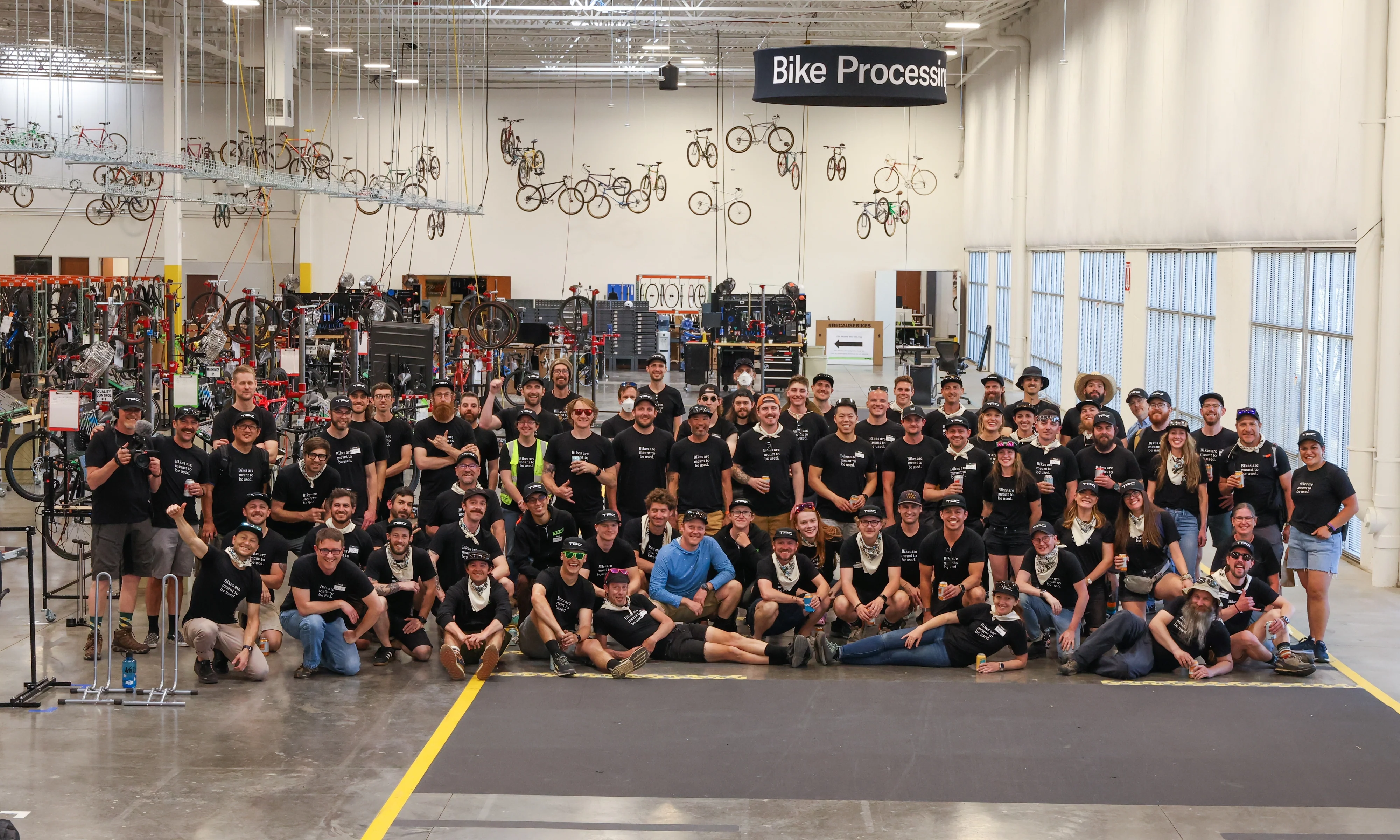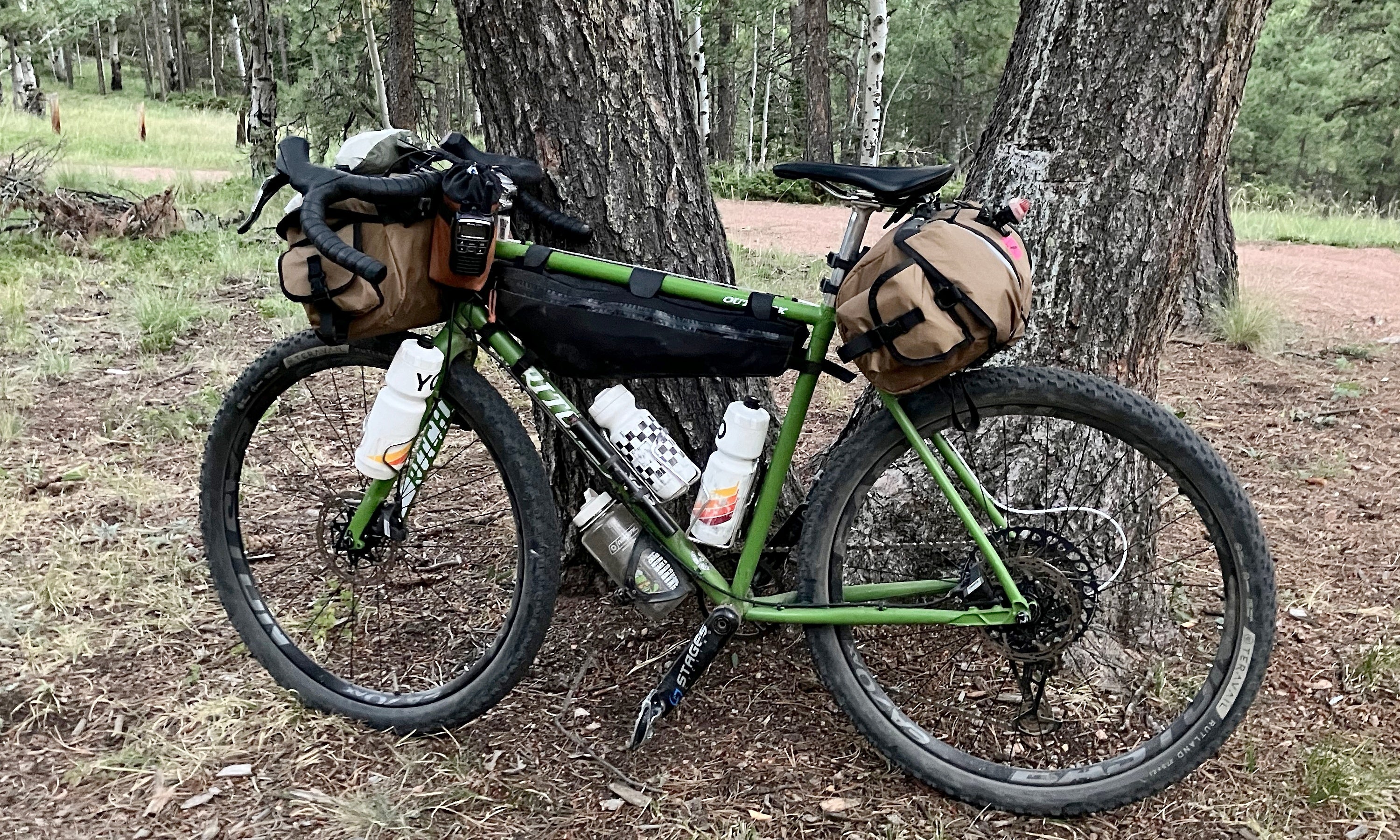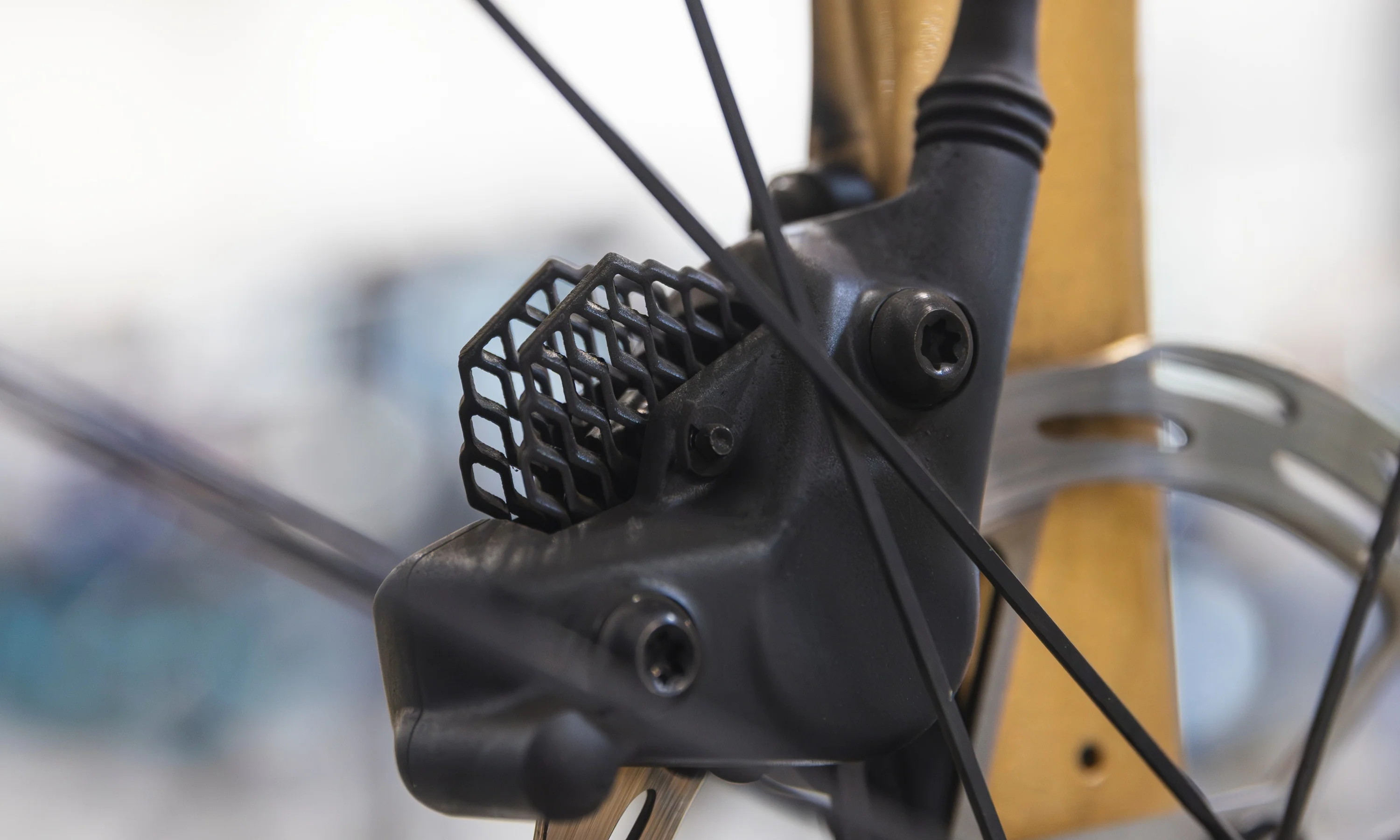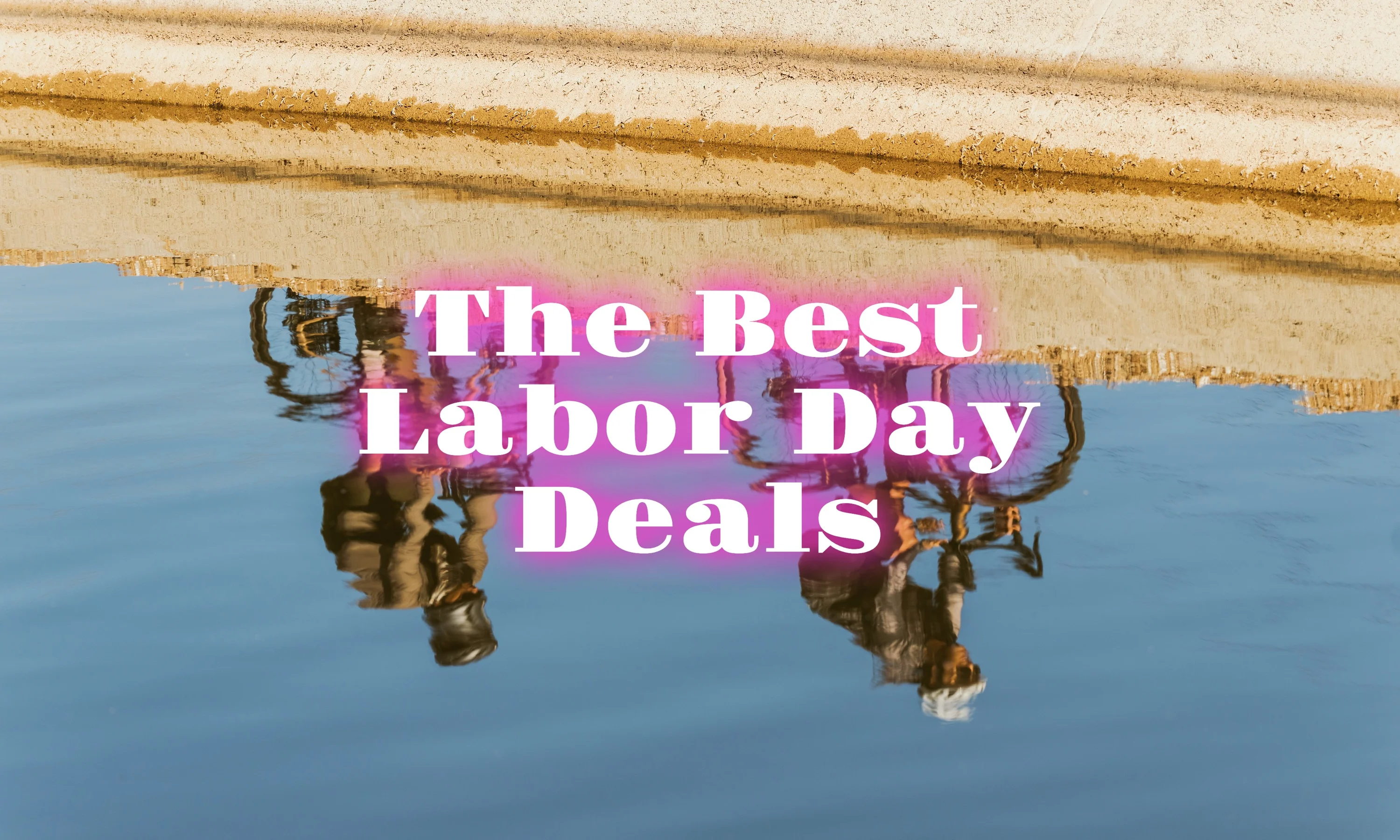Illustrations by Ping Zhu
If you love tent camping but don’t love hiking, or if you want to find your next riding adventure, bikepacking might be your new favorite way to enjoy the outdoors. As the name suggests, bikepacking combines biking and backpacking/camping. While bikepacking might seem intimidating, we’re here to assure you that as long as you’re being safe, there’s no wrong way to bikepack. You can ride 15 miles to your local campground, or set out for an epic, multi-day backcountry trip, or anything in between.
Here are our tips and suggestions to get you started, with some expert advice from TPC ambassador Marley Blonsky.
[button]Shop all bikes[/button]
Do your own thing
First, know that there are no rules to bikepacking. The whole idea is to get away from your routine and enjoy the outdoors with your bike. Decide what seems fun, make a plan, but also remember to be flexible. For your first trip, just spend one night out. Blonsky suggests staying close to home for your first trip.
“Go local for your first time — that way if you forget something, or you get cold or wet, or something goes wrong, you’re not far from home. Take some friends, have some fun,” she said.
Also, a great way to start out is by not camping. This is known as “credit card camping.” Pick a destination — a cute mountain town or place you’ve always wanted to bike to — and spend the night in a hotel or B&B. You’ll get the feel for carrying the things you need overnight without the extra logistics of camp setup. Then, if you like the experience and want to go at it in the woods, you can take the next step.
[newsletter]
Three common beginner mistakes

1. Bringing too much stuff — people tend to overpack. “The first trip I took I packed like four shirts and three pairs of pants for one night,” Blonsky said. “And that’s fine — there’s no wrong way to do it. If you want to take all that stuff, that’s fine,” but you probably need less clothing than you think.
2. Not bringing enough food — you’re using a lot of energy carrying extra gear on the bike, so even if you’re a seasoned rider, you’ll need even more calories than you would if you were just riding with no gear. Here’s one simple rule: less clothing, more food. Blonsky recommends packing real food over sport nutrition and dehydrated meals, “The dehydrated stuff has gotten a lot better in the last couple of years, but I love to pack a baguette, hard cheese, and avocado.”
3. Not bringing enough light sources — Blonsky recommends a solar-powered lantern for camp. Also, bike lights if you plan to bike into the night, or start before sunrise.
[button]SHOP LIGHTS[/button]
Five things to pack that you might not think of
1. Lightweight bike lock — If you’re going into the wilderness alone, or traveling with friends, a bike lock might not be necessary. But if you’re doing a longer trip, a lock is great to have if you want to pop into a store, do laundry, or go for a swim.
2. Comfortable clothes that aren’t sleeping clothes — “Something comfortable to change into at camp is great,” Blonsky says. “I think people often forget that after you ride all day, you’re going to want to get out of your chamois and jersey. I love to change into a dress or something cozy and comfortable.”
3. Camp shoes — Blonsky recommends Crocs or something similar. “Shoes that are really lightweight and don’t take up a lot of space.” She recommends clipping them to the outside of a bag instead of taking up storage space.
4. Something to do at night — Most people focus on biking and camping but then there’s a decent amount of downtime when you’re not pedaling. And, unfortunately for some of us, gone are the days of building a fire and just staring into it. “That’s a huge thing on the West Coast — basically no fires from June until October.” Blonsky recommends cards or a good (lightweight) book. “Something to keep yourself occupied.”
5. Bring something to stay clean with — wet wipes, hand sanitizer, environmentally friendly soap, etc. After a long day on the bike it’s nice to feel at least a little clean!
The intimidation factor
It’s great to get some friends together for a bikepacking trip, but Blonsky also encourages going it alone. In fact, she prefers bikepacking solo.
“The biggest intimidation factor for me is other people — if I go to a campground and people figure out that I’m alone, [I’m thinking] am I going to have to deal with a scary man?” Blonsky says that it’s important to be careful, but that you shouldn't let anxiety keep you at home.
She also says that she isn’t afraid of getting lost or something happening to her bike, because she’s prepared for those things. She has maps and routes downloaded, and she has tools to fix mechanicals. To that end, she recommends always being flexible. If something unexpected happens, just roll with it. If you have to camp somewhere different than you planned, that’s okay. “That’s kind of my motto: if I don’t make it to camp, I just camp where I am.”
Blonsky recommends having a general plan mapped out, but also some alternative stops. So, if she plans to ride 40 miles in a day, she’ll also have a bailout stop at 25 miles, and a stop at 50 miles, in case she’s feeling good and wants to push on.
Plan for weather. Even if the forecast is clear, always pack a rain jacket and something that will keep you warm if temperatures unexpectedly drop. This is especially true in the mountains. If you’re climbing, assume that just about any weather is possible, no matter the season.
[button]SHOP CYCLING APPAREL[/button]
How to pick a route

Plenty of experienced bikepackers have had to call for pick-up at least once ... always tell at least one person where you’re going, what your plan is, and when you’ll be done.
For your first trip, don’t pick something hugely difficult. Riding with lots of gear is different from your usual weekend mileage. Also, don’t be afraid to fail. If you know you’ll be out of cellphone range, take a device like the Garmin inReach. This allows you to text friends or family if things go wrong, or if you just get to the point where you’re not having fun. It’s perfectly fine to get picked up on your first try. Plenty of experienced bikepackers have had to call for pick-up at least once. Even if you don’t call for help, always tell at least one person where you’re going, what your plan is, and when you’ll be done.
Bikepacking.com is an excellent resource to help you plan a route. You can look up various routes based on location, duration (overnight, weekend, etc.), and type of riding (gravel, mountain bike, etc.)
Food and water

Depending on the duration of your trip, you may be packing all of the food and water that you’ll need, or you might need to stop to refuel. Either way, you’ll likely eat a lot more than you think. So, pack wisely. Think about easily-packable protein sources, and high-calorie options. Anything coconut-based is great because it’s high in calories and good fat that will keep you going. Trail mix is good because it satisfies the salty and sweet cravings. Don’t pack things that melt (like chocolate). Many seasoned bikepackers love to pack candy — gummy anything! Other favorites are nut butters, jerky, and overnight oats.
You’ll also want to plan your water sources. Are you bikepacking in the desert? Then you might have to carry all the water you’ll need — for drinking, cooking, and cleaning. If you’ll be near a river or stream, be sure to pack a purification system, or tablets.
What to buy
Like all great hobbies, there's plenty of bikepacking gear designed to make things easier, safer, and more fun. But you don’t have to drop tons of money for your first overnight. Start with a backpack and see if you enjoy the experience. If you love it, you can add gear as you go. Frame, seat, and bar bags, lightweight tents, tarps, cooking gear, and apparel will only make the experience better. You may even want to upgrade to a bike, wheels, and tires that are more suited to hauling lots of gear. Many brands are marketing drop bar, hardtail, and full suspension mountain bikes specifically for bikepacking. For instance, the Bombtrack Beyond 1, Specialized Awol, Kona Rove, and Specialized Fuse are all great options for a variety of trips.
[button]SHOP BIKE BAGS[/button] | [button]SHOP ACCESSORIES[/button] | [button]SHOP GRAVEL BIKES[/button]
Conclusion

Remember, if you’re on a bike, having fun, and safely enjoying the outdoors, then you’re doing it right. No matter if you bike 15 miles out of town for an overnight, or thousands of miles over months of time, you’re a bikepacker, and you belong to the community. Look for bikepacking clubs, make friends, ask questions, decide what you enjoy and do more of that. Also, always remember to follow the rules of the land — know where to camp, respect the weather, respect the altitude, and leave no trace.
Get inspired to start bikepacking with these stories from The Radavist:
Stiletsi & the White Crane: Oregon Timber Trail’s Newest Tier Loop
Chasing the Tundra: a Foray into California’s Lofty Frontier
Serendipity on the TVA: 550 Miles and a Roll of Superia X-tra 400 Film
A Gentle Stoke: Touring the Lower Dolores Canyon
Bikepacking TZ: A Collection of Scenes and Short Stories
Rain Clouds Will Move Across Sahalee Tyee
What does Marley ride?

This is my Velo Orange Piolet, and it is my favorite adventure bike. The strong steel frame feels super-capable (but still light and nimble) over rough terrain, even when I've got it fully loaded up. It also climbs magnificently. I've currently got it set-up with Shimano Deore XT components (11x52T cassette) which has let me climb super steep grades in Oregon and bomb down the backside with its wide range of gears. I also really love all the mounting points for bags and racks. I feel like I'm constantly changing my bikepacking setup depending on the trip and this bike lets me have that flexibility.
We meticulously (and independently) pick every product, and if you purchase through our links we may earn a commission.













